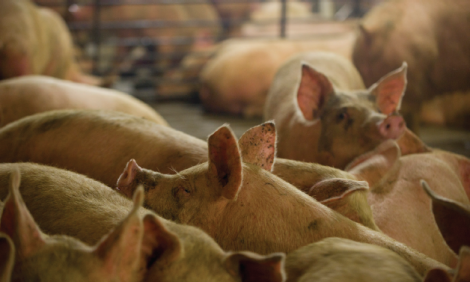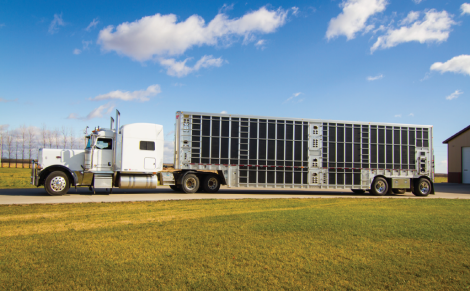 Proper handling and transporting of pigs to market is the final step in raising pigs. Following these basic but necessary steps helps to ensure the farmer can capitalize on the significant dollars they have invested in and worked hard to produce.
Proper handling and transporting of pigs to market is the final step in raising pigs. Following these basic but necessary steps helps to ensure the farmer can capitalize on the significant dollars they have invested in and worked hard to produce.
1. Proper Choring
Throughout the pig’s life, properly walk the pens while choring to ensure better handling and movement of pigs. This allows the pigs time to adjust and respond to our movements, while getting used to having people in the pen without getting scared. This is a simple but important task to ensure efficiency during pig transport.
2. Presorting Pigs
Presorting, if possible prior to loading, is very important. This gives pigs the ability to rest prior to loading and in the summertime, will help keep the pigs cool. Also, removing access to feed will reduce feed cost and waste, and will encourage easier pig movement, especially during the hot summer months.

3. Proper Load-Out Set-Up
Every barn is different, but if you can understand what the pig’s sense as they move to the truck and what could distract them, you will have better success and reduce stress during transportation. A few suggestions include: adding solid panels next to alleyway doors to help limit distractions, painting dark lines in the load-out room to resemble slats help limit balking at the door, and opening curtains to help reduce airflow backdraft and keep pigs moving.
4. Pig Movement
Moving a few pigs at a time limits stress and keeps pigs calm and cool as they are moved through the building and onto the truck. More trips with fewer pigs might seem more time consuming, but in the end, it will take less time and effort than fewer trips with more pigs.
5. Truck Selection and Set-Up
 Working with a trucker you are comfortable with is important. This trucker should have a clean trailer, be punctual, and handle livestock appropriately. The trucker should also understand the importance of on-time plant arrival. Minimizing idle time on the truck is imperative to keep pigs cool, specifically in the hot summer weather. Everyone needs to do their part to help reduce wait lines and improve the overall process at the plants. Another important step is properly bedding and boarding the trailer to match the weather. This provides an ability to wet pigs down on hot days, while keeping air moving over the pigs during transport.
Working with a trucker you are comfortable with is important. This trucker should have a clean trailer, be punctual, and handle livestock appropriately. The trucker should also understand the importance of on-time plant arrival. Minimizing idle time on the truck is imperative to keep pigs cool, specifically in the hot summer weather. Everyone needs to do their part to help reduce wait lines and improve the overall process at the plants. Another important step is properly bedding and boarding the trailer to match the weather. This provides an ability to wet pigs down on hot days, while keeping air moving over the pigs during transport.
Although they may seem basic, these are necessary steps when handling and transporting pigs to market. You’ve worked hard to get to this point, make sure to do all the important little things and capitalize on your investment.
Article By: Chris McCulloh Regional Manager East, Big Stone Marketing
